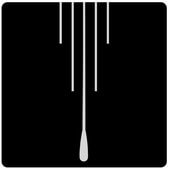Piano Care and Mainenance
- You should get your piano tuned every six to twelve months depending on how often you use it and how drastically the climate changes from season to season. The longer you wait to have your piano tuned, the more wear is put on its strings, deteriorating its sound quality, and in extreme cases, breaking the strings.
- A typical piano tuning costs around $125, and the tuner will check if there is any other maintenance the piano needs.
- Keep the room your piano is in at a consistent temperature and humidity year-round. Changes in climate will cause the piano to detune faster and put extra wear on its mechanics. If the changes are too frequent and extreme, it can even crack the piano’s cabinetry.
- Regular dusting with a light feather duster (as opposed to a cloth, which can scratch the finish) is usually all a piano needs to stay clean. Never use typical household cleaners to polish or clean your piano, oven those promising to protect wood finish. If you feel the inside is dirty, ask your piano technician to clean it next time you get a tuning to avoid damaging small parts inside the piano.
- If you want to remove fingerprints or other dirty marks from the piano, use a mild soap solution (one technician recommends Murphy’s Oil Soap; specialty “piano polish” formulas are also available). Use these products sparingly.
- Avoid putting your piano in direct sunlight, which may discolor the piano and damage its finish.
- Objects placed on top of the piano should have a felt bottom to avoid scratching the finish. Do not place plants or drinks on a piano – water can cause irreversibly damage if it gets inside the piano.
- Piano keys can be cleaned with a soft cloth very lightly dampened with water and a mild soap. Clean only a couple keys at a time and dry them immediately. Clean the black keys with a separate cloth from the white keys.
- Do not use aerosols to clean or dust the piano.
- It’s recommended you wash your hands before playing your piano to avoid fingerprints and other staining on the keys.
- Dents, scratches, and chips in the finish can be repaired by a specialist.
- Hire qualified piano movers whenever you need to move your piano.
- If your piano has ivory keys, keep the fallboard (the lid that covers the keys) open when the piano is not in use or the keys will discolor. Even with plastic keys, it is not necessary to keep the fallboard closed to protect the piano – it is almost purely decorative.
- For more information on piano maintenance, and for help in finding a qualified piano technician, refer to the Piano Technicians Guild: www.ptg.org
Keys are sticking, or are slow to return to their original position
The piano regularly goes out of tune
Some keys produce no sound
I hear rattling or clanking noises when I play or engage or the pedals
The pedals squeak when engaged
Keys are changing color
Every note on my electric keyboard sustains, even if the pedal isn't depressed.
- If your upright piano has a practice pedal that heavily dampens the sound (usually the center pedal), the felt mute used to dampen the keys may be stopping the hammers from returning. Open the piano lid and play a few keys to find out. The spring on the mute bar may be growing weak. Either replace the spring, or reset it to a different spot of the mute to add more tension. You may also remove the felt bar altogether if you don’t use it.
- There may be excessive oily or dusty build-up between keys, or something is stuck behind the hammers. This is rare and may only happen if the piano has been in disuse for a very long time. You can open up the lid and pedal cover to access certain areas and vacuum out the dust or remove obstructing objects.
The piano regularly goes out of tune
- The strings on the piano, or the string pin that holds them into place, is deteriorating and needs to be replaced. Call a piano technician.
- The temperature in your piano room may change too drastically and frequently.
Some keys produce no sound
- The hammer is broken. A broken hammer is not usually a big issue and can be repaired by a piano technician.
- Something is obstructing the hammer from hitting the strings. Open the piano lid and remove the object.
I hear rattling or clanking noises when I play or engage or the pedals
- Pieces on the piano very rarely come loose unless the piano has been damaged. However, some rubber or felt pads can deteriorate over time, specifically those that dampen some of the metal rods used for the pedal mechanism. Ask your piano technician for assistance in fixing this.
The pedals squeak when engaged
- WD-40 can be safely applied to the pedals to prevent them from squeaking. Do not apply it to any parts
Keys are changing color
- Ivory keys will discolor and turn yellow if the fallboard is kept closed. Keep the fallboard open when the piano is not in use to prevent further discoloration.
Every note on my electric keyboard sustains, even if the pedal isn't depressed.
- Turn the piano off and then back on, making sure to not hold the pedal down while the piano is turning on. If this doesn't work, replace the pedal.
